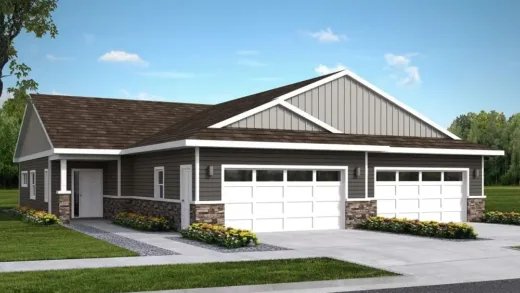When it comes to owning a condominium, one of the most crucial aspects often overlooked by owners is condo insurance. While many condo owners understand the necessity of insurance, the specifics can be confusing.
This comprehensive guide will clarify what condo insurance is, why it’s essential, what it typically covers, and how to choose the right policy for your needs.
Contents
- What is Condo Insurance?
- Why is Condo Insurance Important?
- Understanding the Condo Association’s Master Policy
- Key Components of Condo Insurance
- Additional Coverage Options
- Factors Affecting Condo Insurance Premiums
- How to Choose the Right Condo Insurance Policy
- Filing a Condo Insurance Claim
- Tips for Reducing Condo Insurance Premiums
- Conclusion
What is Condo Insurance?
Condo insurance, also known as HO-6 insurance, is a policy that protects your individual unit within a condominium complex. Unlike homeowners insurance, which covers the entire property, condo insurance specifically addresses the unique needs of condo owners, offering coverage for the interior of their unit and their personal belongings.
Why is Condo Insurance Important?
Condo insurance is essential for several reasons:
- Protection of Personal Property: This includes everything from furniture and electronics to clothing and kitchenware. If these items are damaged or stolen, condo insurance helps cover the cost of replacement or repair.
- Interior Unit Coverage: While the condo association’s master policy may cover the building’s exterior and common areas, it typically doesn’t cover the interior of individual units. Condo insurance fills this gap, covering improvements, fixtures, and appliances within your unit.
- Liability Protection: If someone is injured inside your condo, you could be held liable for their medical expenses. Condo insurance can help cover these costs, as well as legal fees if you’re sued.
- Loss of Use Coverage: If your condo becomes uninhabitable due to a covered event, condo insurance can help pay for temporary living expenses, such as hotel bills and meals.
- Loss Assessment Coverage: In some cases, condo owners can be held financially responsible for damage to common areas. Loss assessment coverage can help cover your share of these costs.
Understanding the Condo Association’s Master Policy
Before purchasing condo insurance, it’s important to understand what is covered by your condo association’s master policy. The master policy typically falls into one of three categories:
- Bare Walls-In: Covers the building structure and common areas, but not the interior of individual units. Condo owners are responsible for insuring everything within their unit, including walls, flooring, and fixtures.
- Single Entity: Covers the building structure, common areas, and some items within individual units, such as fixtures and appliances originally installed by the developer. Any improvements or upgrades made by the condo owner need separate coverage.
- All-Inclusive: Provides the most comprehensive coverage, including the building structure, common areas, and all items within individual units, regardless of when they were installed. However, personal belongings still require separate coverage.
Knowing the type of master policy your condo association has will help you determine the extent of coverage you need for your unit.
Key Components of Condo Insurance
Condo insurance policies typically consist of several key components:
- Dwelling Coverage: Protects the interior of your unit, including walls, floors, ceilings, and any fixtures or improvements you’ve made. The amount of dwelling coverage you need depends on the value of your unit’s interior and any upgrades you’ve made.
- Personal Property Coverage: Covers your personal belongings, such as furniture, electronics, and clothing. It’s important to take an inventory of your belongings and their value to determine the appropriate amount of coverage.
- Liability Coverage: Protects you if someone is injured in your unit or if you cause damage to someone else’s property. Liability coverage typically includes legal fees, medical expenses, and any settlements or judgments against you.
- Loss of Use Coverage: Helps pay for additional living expenses if your unit becomes uninhabitable due to a covered event. This can include hotel bills, meals, and other expenses incurred while your condo is being repaired or rebuilt.
- Loss Assessment Coverage: Covers your share of costs for damage to common areas or liability claims against the condo association that exceed the limits of the master policy. This coverage can be especially valuable in the event of major damage to the building or common areas.
Additional Coverage Options
Depending on your specific needs, you may want to consider additional coverage options, such as:
- Flood Insurance: Standard condo insurance policies typically do not cover flood damage. If you live in an area prone to flooding, you may need to purchase a separate flood insurance policy.
- Earthquake Insurance: Similarly, earthquake damage is not usually covered by standard policies. If you live in an earthquake-prone area, consider purchasing separate earthquake insurance.
- Water Backup Coverage: Covers damage caused by water backing up from drains, sewers, or sump pumps. This coverage can be valuable if your condo is prone to plumbing issues or if you have a finished basement.
- Identity Theft Coverage: Provides protection and assistance if your identity is stolen. This can include coverage for legal fees, lost wages, and other expenses related to restoring your identity.
Factors Affecting Condo Insurance Premiums
Several factors can influence the cost of your condo insurance premiums, including:
- Location: The location of your condo can significantly impact your premiums. Factors such as crime rates, proximity to fire stations, and the likelihood of natural disasters can all play a role.
- Building Structure and Age: Older buildings or those constructed with materials that are more susceptible to damage may result in higher premiums. Conversely, newer buildings with updated safety features may qualify for discounts.
- Coverage Amounts: The amount of coverage you choose for your dwelling, personal property, liability, and other components will directly affect your premiums. Higher coverage limits typically result in higher premiums.
- Deductibles: The deductible is the amount you pay out of pocket before your insurance kicks in. Choosing a higher deductible can lower your premiums, but it also means you’ll pay more in the event of a claim.
- Claims History: Your personal claims history, as well as the claims history of the condo building, can impact your premiums. A history of frequent or high-value claims may result in higher premiums.
- Safety and Security Features: Installing safety and security features, such as smoke detectors, burglar alarms, and fire sprinklers, can help lower your premiums. Many insurers offer discounts for these features.
How to Choose the Right Condo Insurance Policy
Choosing the right condo insurance policy involves assessing your needs, understanding the coverage provided by your condo association’s master policy, and comparing quotes from different insurers. Here are some steps to help you choose the right policy:
- Assess Your Coverage Needs: Take an inventory of your personal belongings and their value, as well as any improvements or upgrades you’ve made to your unit. Consider the potential risks you face, such as natural disasters or liability concerns.
- Review Your Condo Association’s Master Policy: Determine what is covered by the master policy and what gaps you need to fill with your own condo insurance policy.
- Compare Quotes from Multiple Insurers: Obtain quotes from several insurance companies to compare coverage options and premiums. Be sure to compare policies with similar coverage limits and deductibles to get an accurate comparison.
- Check the Insurer’s Reputation: Research the reputation of the insurance companies you’re considering. Look for reviews and ratings from other customers, as well as information about their claims process and customer service.
- Consider Bundling Policies: Many insurance companies offer discounts if you bundle your condo insurance with other policies, such as auto insurance. Bundling can help you save money on premiums and simplify your insurance management.
- Ask About Discounts: Inquire about any discounts that may be available, such as those for safety and security features, a claims-free history, or being a long-term customer.
- Read the Fine Print: Carefully review the terms and conditions of any policy you’re considering. Pay attention to exclusions, limits, and any additional endorsements or riders that may be required to fully protect your unit.
Filing a Condo Insurance Claim
In the event that you need to file a claim, it’s important to know the steps involved:
- Document the Damage: Take photos and videos of the damage to your unit and any affected personal belongings. This documentation will be crucial when filing your claim.
- Notify Your Insurance Company: Contact your insurance company as soon as possible to report the damage and begin the claims process. Be prepared to provide details about the damage and any relevant documentation.
- Complete Claim Forms: Your insurance company will provide you with claim forms to complete. Be thorough and accurate in your responses to avoid delays in processing your claim.
- Work with the Adjuster: Your insurance company may send an adjuster to assess the damage and determine the amount of coverage you’re entitled to. Be cooperative and provide any additional information or documentation they request.
- Get Repair Estimates: Obtain estimates from licensed contractors for the cost of repairs. Your insurance company may require these estimates to process your claim.
- Review the Settlement: Once your claim is processed, review the settlement offer from your insurance company. If you have any questions or concerns, discuss them with your insurance company before accepting the settlement.
- Make Repairs: After receiving your settlement, you can proceed with making the necessary repairs to your unit. Keep all receipts and documentation related to the repairs for your records.
Tips for Reducing Condo Insurance Premiums
While condo insurance is essential, there are ways to reduce your premiums without sacrificing coverage:
- Increase Your Deductible: Choosing a higher deductible can lower your premiums. Just make sure you have enough savings to cover the deductible if you need to file a claim.
- Install Safety and Security Features: Adding smoke detectors, burglar alarms, and fire sprinklers can qualify you for discounts on your premiums.
- Bundle Policies: Bundling your condo insurance with other policies, such as auto insurance, can result in significant discounts.
Conclusion
Condo insurance is a critical safeguard for any condominium owner. It offers vital protection for your personal property, the interior of your unit, and against potential liabilities.
Understanding the details of your condo association’s master policy, accurately assessing your individual coverage needs, and exploring additional options like flood or earthquake insurance are all crucial steps in securing comprehensive coverage. By comparing quotes, checking the reputation of insurers, and taking advantage of available discounts, you can find the right policy that provides peace of mind without breaking the bank. In the event of a claim, knowing the procedure and keeping thorough documentation will streamline the process and ensure you receive the coverage you’re entitled to.
With this guide, you are well-equipped to navigate the complexities of condo insurance and make informed decisions to protect your investment and lifestyle.











